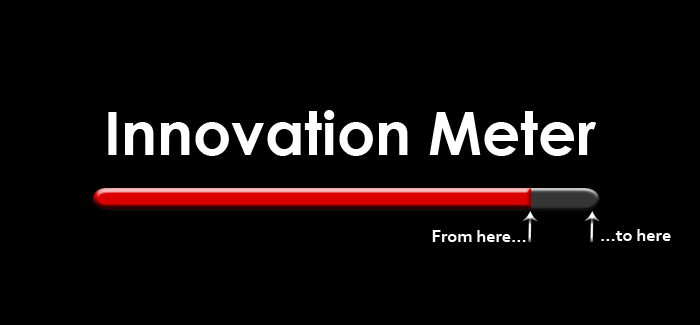Innovation’s Renovation: How AAA games need to change
It’s an argument thrown around by designers on why they need to completely change something to keep it fresh, entertaining, and money-generating. The loudest voices are, of course, certain AAA developers with multimillion dollar franchises and fanbases that sit around waiting to tear apart the game they paid sixty dollars for.
While I think developers can and should try to push their titles forward in mechanics, storytelling, and world building, the problems start to appear when it is only the developer doing that innovating. Gaming is a two way street, or three if you count publishers, and if you cut off that vital player-designer connection, your game is bound to fail.
Your playerbase is better than you
One of the things about Valve that I love is their willingness to let their players do a lot of the heavy lifting. Team Fortress 2 released with less than ten maps, three game modes, and nine classes. Yes there have been hundreds of updates, and yes there have been a number of significant changes to the metagame, but how much of it is on Valve, really? Counter-Strike is the same. One game mode, four or five main weapons, maybe six stock maps. What has CS:GO really changed besides graphical improvements and a new buy menu? A couple new weapons and voice overs, new animations, etc. But nothing really “revolutionary,” in the basic sense of the word.
DayZ is the same. How many people can say they were hardcore Arma II players before Dean Hall’s mod came out? I’d only heard of the game in passing, and rarely at that. Then DayZ exploded, and I’ve put too many hours into a game I’d never have touched otherwise. Bohemia is behind the mod 100%, and it is continually patched, monitored and cleaned to keep things running smoothly.
Let’s not forget that Counter-Strike was originally a mod in itself for the original Half-Life. Portal was a college level concept-game that Valve liked so much they bought. Call of Duty is essentially a much-affected Quake mod, a trait it shares with far-more-loved sibling Half-Life. And even though most Call of Duty games don’t have mod support, that hasn’t stopped their fanbases from making mods anyway, with or without developer input.
What I’m getting at here is this: the future of the AAA space is determined not just by the Free2Play revolution or the introduction of new hardware. It rests on developers realizing that the communities around their games are not only intelligent, but that nine times out of ten, better at making games than the professionals. Or they’re at least better at making games enjoyable than the professionals. Case in point: Dark Souls’s PC graphical hiccups solved in 30 minutes.
Then what are these expensive boxes of sand for?
I know that such support and “innovation” can’t happen so easily on the console side of things. There are significant limitations as to what an XBOX or PlayStation can do, and what kind of support they can receive. Mod support is a pipe dream for consoles 99% of the time, especially when there are terms of service and warranties to risk with the addition of alien code.
Or at least, that’s what I’d like to say. Fortunately, it isn’t true. On the release of the Kinect, people were worried about what it could and couldn’t do. Then some guy made it possible to port himself directly into Minecraft. Then Microsoft, being intelligent people, started pushing for people to use Kinect in new ways, and released a commercial showcasing just a few of the ways people “hacked” the Kinect for the better. Music and medicine with a piece of gaming hardware makes me hopeful for the future of this industry.
On a more mean-spirited note, go back to the dark days of Modern Warfare 2, or play almost any game of CoD4 or World at War. MW2 saw the introduction of actual aimbots, wallhacks, gravity alterations, forced glitches and more, all through modders and hackers wanting to change the game. CoD4 and World at War have God Mode, flight, gravity alteration, player speed changing, infinite ammo and lord knows what else. CoD4 on the PC is only really surviving today because it was the last Call of Duty with real mod tools, and there are still mods in the works for it. Even Call of Duty 2 has a population on it, albeit a small one.
What the hell’s a “phone”?
I can’t rightly write an article on innovation without at least touching on the mobile gaming space. If there’s any innovation really going on in the gaming world, it’s there. Rarely before has there been a need to completely rewrite the control scheme of a game while keeping it both responsive and intuitive. And such games are more restricted even than console titles are by the hardware, interface, and average time spent playing. Constraints as suffocating as the ones mobile developers face on a daily basis force new, and not always successful, ideas into the mechanics.
All this gets me thinking. Where is the ceiling on what can and can’t be done with a touch screen? I think it’s already been reached, much like that limit appears for the analog controller and console setup, or mouse and keyboard. It comes down to what new experiences can be created around the control scheme, not what new tricks it can be made to do. Much in the same way as the structure of novels and movies hasn’t really changed all that much in the many years of their history, so too must games become dependent on the creativity of their creators and those who enjoy them. The issue, one of many, is the business side of gaming’s desire to control and the developer’s inability to provide the proper tools for interaction.
In the end, someone will have to give, and I’m not putting my money on either side just yet.








I feel the majority of innovation is stifled not by hardware constraints or lack of ingenuity, but by publishers’ and studios’ fear of having a game bomb. Making a relatively “safe” title is a good way to guarantee revenue.
I guess that’s why I’m excited about increased opportunities for Indie Devs to be in the spotlight. Stuff like Ouya or Steam Greenlight increase the odds a small but inspiring project will get in front of gamers.